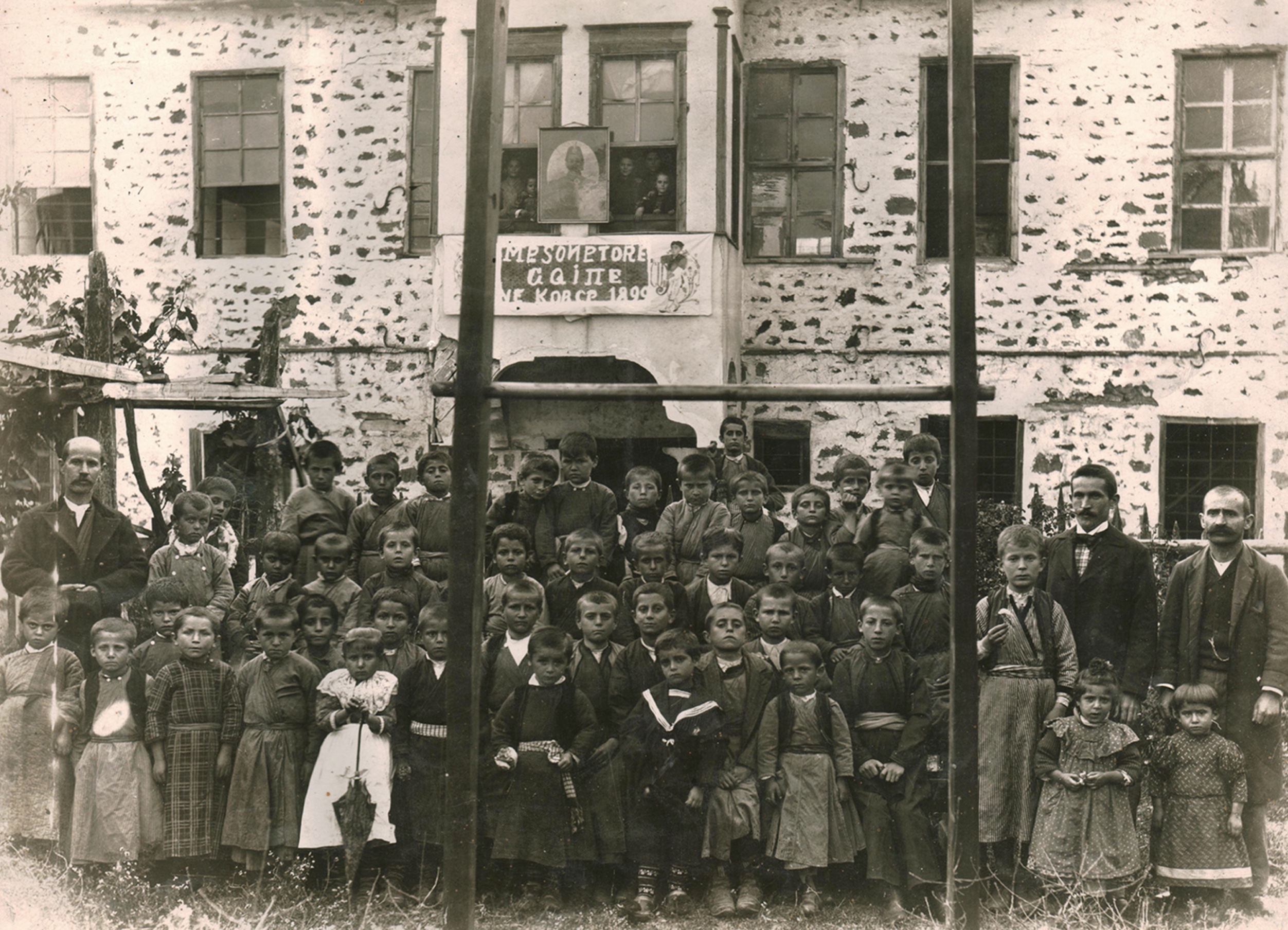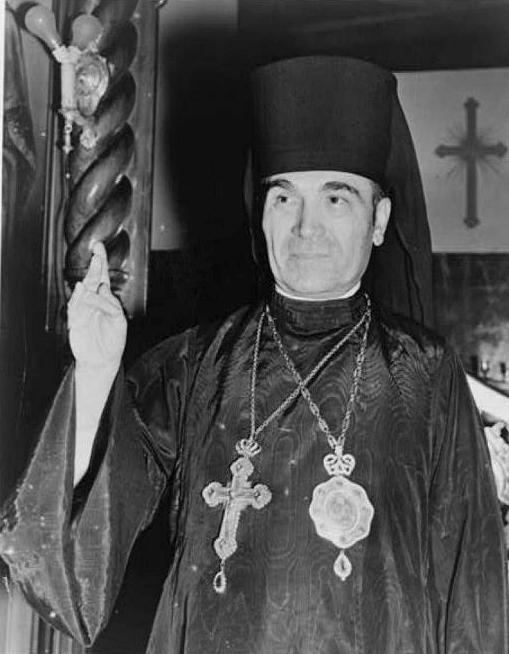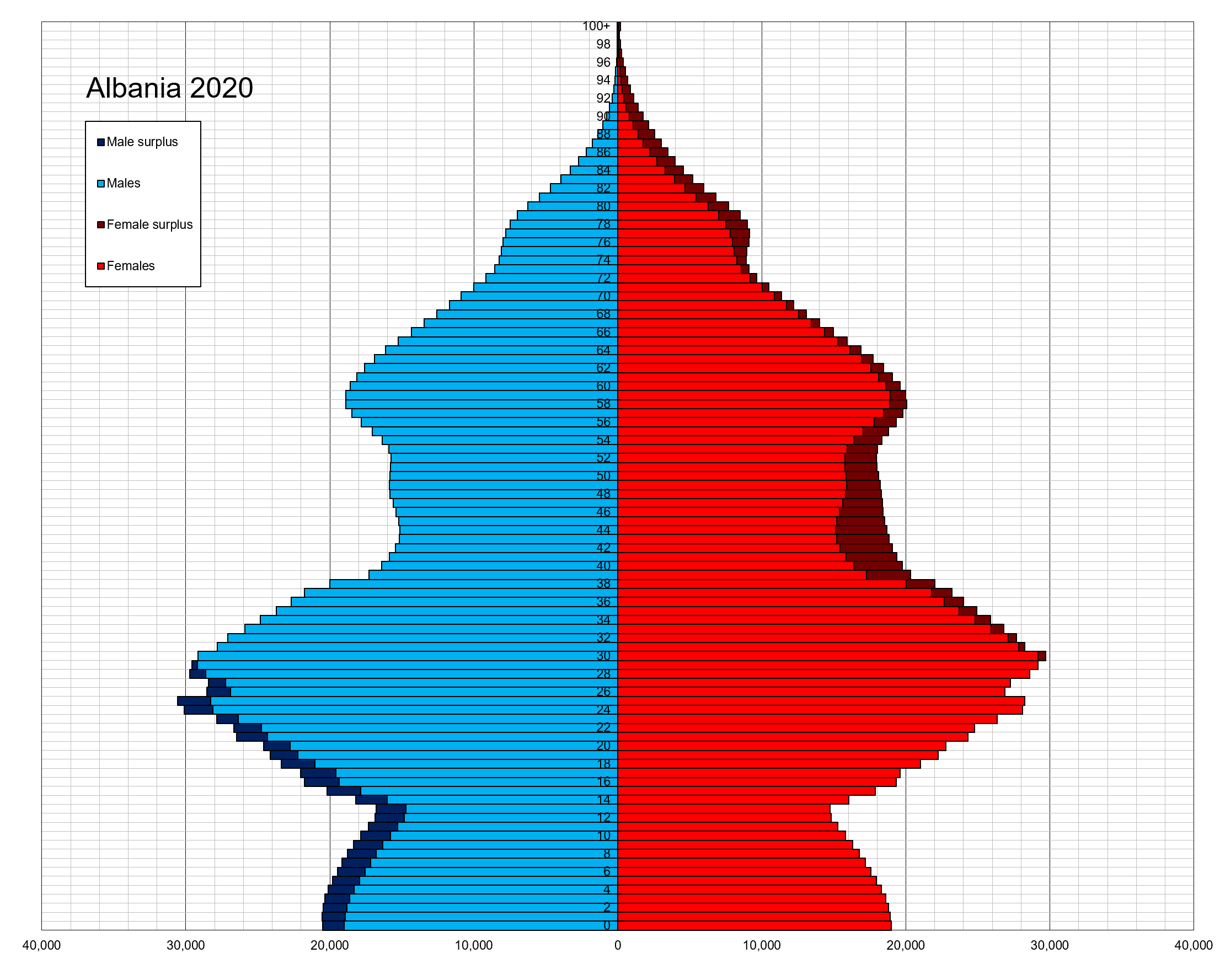|
Korçë District
Korçë District (), was one of the 36 districts of Albania, which were dissolved in July 2000 and replaced by 12 counties. It had a population of 143,499 in 2001, and an area of . Its capital was the city of Korçë. Its territory is now part of Korçë County: the municipalities of Korçë, Maliq and Pustec. Korçë District was considered one of two main minority regions of the country's south. During World War I the French created the Republic of Korça in the area. Geography It had an area of , making it the largest district in Albania. It was situated in the southeastern part of Albania, from lat. 40°27'N to lat. 40°57'N and from long. 21°4'E to 20°19'E. It was bordered by Pogradec District to the north, by Greece with the Florina regional unit (Greek Macedonia) to the east, Devoll District to the southeast, by Kolonjë District and Përmet District to the southwest, and by Gramsh District and Skrapar District on the west. History 19th century Yuriy Veneli ... [...More Info...] [...Related Items...] OR: [Wikipedia] [Google] [Baidu] |
Korçë
Korçë (; sq-definite, Korça) is the List of cities and towns in Albania, eighth most populous city of Albania and the seat of Korçë County and Korçë Municipality. The total population of the city is 51,152 and 75,994 of Korçë municipality (2011 census), in a total area of . It stands on a plateau some Above mean sea level, above sea level, surrounded by the Morava Mountains. The area of the Old Bazaar of Korçë, Old Bazaar, including Mirahori Mosque, Korçë, Mirahori Mosque, is considered as the urban core of the city. Founded by the local Ottoman Empire, Ottoman Albanians, Albanian nobleman Iljaz Bej Mirahori, Ilias Bey Mirahori, the urban area of Korçë dates back to the late 15th century and the beginning of the 16th century, however its actual physiognomy was realized in the 19th century, during a period that corresponds with the rapid growth and development of the city. The Old Bazaar has played a dominant role in Albania's market history. Korçë is the larges ... [...More Info...] [...Related Items...] OR: [Wikipedia] [Google] [Baidu] |
Përmet District
Përmet District () was one of the 36 districts of Albania, which were dissolved in July 2000 and replaced by 12 newly created counties. It had a population of 25,837 in 2001, and an area of . Its area has an Aromanian minority. It is in the south-east of the country, and its capital was the town of Përmet. Its territory is now part of Gjirokastër County: the municipalities of Përmet and Këlcyrë. Despite the limited number of excavations carried out so far, a series of important sites has been identified in the district.Gërmime të vitit 1983-shpella e Bënjës (Excavation of the year 1983 – the cave of Bënja), “Iliria” 1983, 2, p. 245-247. The finds attest to the long history of inhabitation in this part of the country. Of special importance is the cave near the village of Bënja, which produced evidence of continuous habitation from the Eneolithic to the Iron Age. Additionally, an important necropolis has been unearthed near the village of Piskova in the upper Vjos� ... [...More Info...] [...Related Items...] OR: [Wikipedia] [Google] [Baidu] |
Islam In Albania
Islam arrived in Albania mainly during the Ottoman period in the history of Albania, Ottoman period when the majority of Albanians over time converted to Islam under Ottoman Empire, Ottoman rule. Following the Albanian National Awakening , Albanian National Awakening (Rilindja) tenets and the de-emphasis of religious tradition in Albania, all governments in the 20th century pursued a secularization policy, most aggressively under the People's Socialist Republic of Albania, which actively Persecution of Muslims, persecuted Muslims. Due to this policy, Islam, as with all other faiths in the country, underwent radical changes. Decades of state atheism, which ended in 1991, brought a decline in the religious practice of all traditions. The post-communist period and the lifting of legal and other government restrictions on religion allowed Islam to revive through institutions that generated new infrastructure, literature, educational facilities, international transnational links a ... [...More Info...] [...Related Items...] OR: [Wikipedia] [Google] [Baidu] |
Eastern Orthodoxy In Albania
Eastern Orthodoxy arrived in the areas of Illyrii proprie dicti or Principality of Arbanon during the period of Byzantine Empire. Those areas fell under the Ottoman Empire during the late medieval times and Eastern Orthodoxy underwent deep sociopolitical difficulties that lasted until the fall of the Ottoman Empire. Between 1913 and until the start of WWII under the newly recognized state of Albania, Eastern Orthodoxy saw a revival and in the 1937 the Autocephaly after a short Eastern Orthodoxy schism and contestation was recognized. Decades of persecution under the Communist state atheism, which started in 1967 and officially ended in December 1990, greatly weakened all religions and their practices especially Christians of Albania. The post-communist period and the lifting of legal and other government restrictions on religion allowed Orthodoxy to revive through institutions and enabled the development of new infrastructure, literature, educational facilities, international tra ... [...More Info...] [...Related Items...] OR: [Wikipedia] [Google] [Baidu] |
Romani People
{{Infobox ethnic group , group = Romani people , image = , image_caption = , flag = Roma flag.svg , flag_caption = Romani flag created in 1933 and accepted at the 1971 World Romani Congress , pop = 2–12 million , region2 = United States , pop2 = 1 million estimated with Romani ancestry{{efn, 5,400 per 2000 United States census, 2000 census. , ref2 = {{cite news , first=Kayla , last=Webley , url=http://content.time.com/time/nation/article/0,8599,2025316,00.html , title=Hounded in Europe, Roma in the U.S. Keep a Low Profile , agency=Time , date=13 October 2010 , access-date=3 October 2015 , quote=Today, estimates put the number of Roma in the U.S. at about one million. , region3 = Brazil , pop3 = 800,000 (0.4%) , ref3 = , region4 = Spain , pop4 = 750,000–1.5 million (1.5–3.7%) , ref4 = {{cite web , url ... [...More Info...] [...Related Items...] OR: [Wikipedia] [Google] [Baidu] |
Pustec
Pustec (; ) formerly known as Liqenas (1973–2013), is a village in Pustec Municipality, Korçë County, eastern Albania. Situated on the southwestern shore of Lake Prespa, it is home to much of the Macedonian minority in Albania. Geography Pustec is located on the southwestern shore of Lake Prespa and is the nearest village to the island of Maligrad. It sits at an elevation of above sea level. To the northeast, along the lake, lies Shulin, while in the southeast is the village of Leska. Pustec and the surrounding region lie within the Prespa National Park. History The village of Pustec was mentioned in the Slepche Beadroll from the 16th century. The survey by Dimitar Mishev (D. Brancoff) from 1905 shows that the inhabitants of the village of Pustec () were in the bosom of the Bulgarian Exarchate. There were 400 Bulgarian Exarchists in the village. The French linguist André Mazon in his study on Slavic folklore in Albania from 1936 noted Pustec as a Bulgarian vi ... [...More Info...] [...Related Items...] OR: [Wikipedia] [Google] [Baidu] |
Greeks In Albania
The Greeks in Albania are ethnic Greeks who live in or originate from areas within modern Albania. They form the largest minority group in the country. They are mostly concentrated in the south of the country, in the areas of the northern part of the historical region of Epirus, in parts of Vlorë County, Gjirokastër, Korçë, and Berat County. The area is also known as Northern Epirus. Consequently, the Greeks hailing specifically from Southern Albania are also known as Northern Epirotes ( ''Vorioipirotes'', ). The Greeks who live in the "minority zones" of Albania are officially recognised by the Albanian government as the Greek National Minority of Albania (, ''Elliniki Mionotita stin Alvania''; ). In 1913, after the end of five centuries of Ottoman rule, the area was included under the sovereignty of the newly founded Albanian state. The following year, Greeks revolted and declared their independence, and with the following Protocol of Corfu the area was recognised as a ... [...More Info...] [...Related Items...] OR: [Wikipedia] [Google] [Baidu] |
Aromanians In Albania
The Aromanians in Albania (; ) are an officially recognised Ethnic groups in Europe, ethnic minority in Albania. History Mentions to Vlachs in what is modern-day Albania dates back to the Middle Ages, with Vlach (Latin-speaking) remnants of former Roman rule being noted among historical chroniclers. Throughout the Ottoman period, Aromanians resided in modern-day Albania and Greece where they practiced transhumance. Some more settled Aromanians founded notable centers of culture such as Moscopole, which is situated in modern-day Albania, and reached its height in the 1700s. The town experienced a precipitous decline after attacks by Ali Pasha Tepelena's troops in the later half of that century, which saw a significant Aromanian diaspora to other Albanian towns, Greece, and Romania itself. Aromanians in Albania would later see a migration to the Myzeqe plains in the 1800s, alongside Tirana, Durres and Elbasan. The Aromanians respectively assimilated into Albanian society and we ... [...More Info...] [...Related Items...] OR: [Wikipedia] [Google] [Baidu] |
Albanians
The Albanians are an ethnic group native to the Balkan Peninsula who share a common Albanian ancestry, Albanian culture, culture, Albanian history, history and Albanian language, language. They are the main ethnic group of Albania and Kosovo, and they also live in the neighboring countries of Albanians in North Macedonia, North Macedonia, Albanians in Montenegro, Montenegro, Albanians in Greece, Greece, and Albanians in Serbia, Serbia, as well as in Albanians in Italy, Italy, Albanians in Croatia, Croatia, Albanians in Bulgaria, Bulgaria, and Albanians in Turkey, Turkey. Albanians also constitute a large diaspora with several communities established across Europe and the other continents. Albanian language, The language of the Albanians is an Indo-European languages, Indo-European language and the only surviving representative of the Albanoid, Albanoid branch, which belongs to the Paleo-Balkan languages, Paleo-Balkan group. Albanians ... [...More Info...] [...Related Items...] OR: [Wikipedia] [Google] [Baidu] |
Demographics Of Albania
Demographic features of the population of Albania include population density, ethnicity, education level, health of the populace, economic status, religious affiliations and other aspects. The demography of Albania is monitored by the Institute of Statistics of Albania. The institute has performed demographic censuses since the 1920s. The latest census in Albania was performed in September 2023. Albania is a fairly ethnically and linguistically homogeneous country, with ethnic Albanians forming 91% of the total population in the country. The total population residing in Albania in September 2023 was 2,402,113 according to the most recent INSTAT census. The population pyramid shown in the infobox on this page does not reflect this population census with figures of the birth cohorts deflated, sometimes drastically, and the population pyramid deflated with no large outcrops at all, as the population numbers now are around half a million lower than the population pyramid shown. Pa ... [...More Info...] [...Related Items...] OR: [Wikipedia] [Google] [Baidu] |
Aromanians
The Aromanians () are an Ethnic groups in Europe, ethnic group native to the southern Balkans who speak Aromanian language, Aromanian, an Eastern Romance language. They traditionally live in central and southern Albania, south-western Bulgaria, northern and central Greece, and North Macedonia, and can currently be found in central and southern Albania, south-western Bulgaria, south-western and eastern North Macedonia, northern and central Greece, southern Serbia, and south-eastern Romania (Northern Dobruja). An Aromanian diaspora living outside these places also exists. The Aromanians are known by several other names, such as "Vlachs" or "Macedo-Romanians" (sometimes used to also refer to the Megleno-Romanians). The term "Vlachs" is used in Greece and in other countries to refer to the Aromanians, with this term having been more widespread in the past to refer to all Romance-speaking peoples of the Balkan Peninsula and Carpathian Mountains region (Southeast Europe). Their ver ... [...More Info...] [...Related Items...] OR: [Wikipedia] [Google] [Baidu] |
Kaza
A kaza (, "judgment" or "jurisdiction") was an administrative divisions of the Ottoman Empire, administrative division of the Ottoman Empire. It is also discussed in English under the names district, subdistrict, and juridical district. Kazas continued to be used by some of the empire's successor states. At present, they are used by administrative divisions of Iraq, Iraq, administrative divisions of Lebanon, Lebanon, Administrative divisions of Jordan, Jordan, and in Arabic language, Arabic discussion of Administrative divisions of Israel, Israel. In these contexts, they are also known by the Arabic name qada, qadā, or qadaa (, ). Former use Ottoman Empire In the Ottoman Empire, a kaza was originally equivalent to the kadiluk, the district subject to the legal and administrative jurisdiction of a kadi (Ottoman Empire), kadi or judge of Islamic law. This usually corresponded to a major city of the empire with its surrounding villages. A small number of kazas made up each sanjak ( ... [...More Info...] [...Related Items...] OR: [Wikipedia] [Google] [Baidu] |






